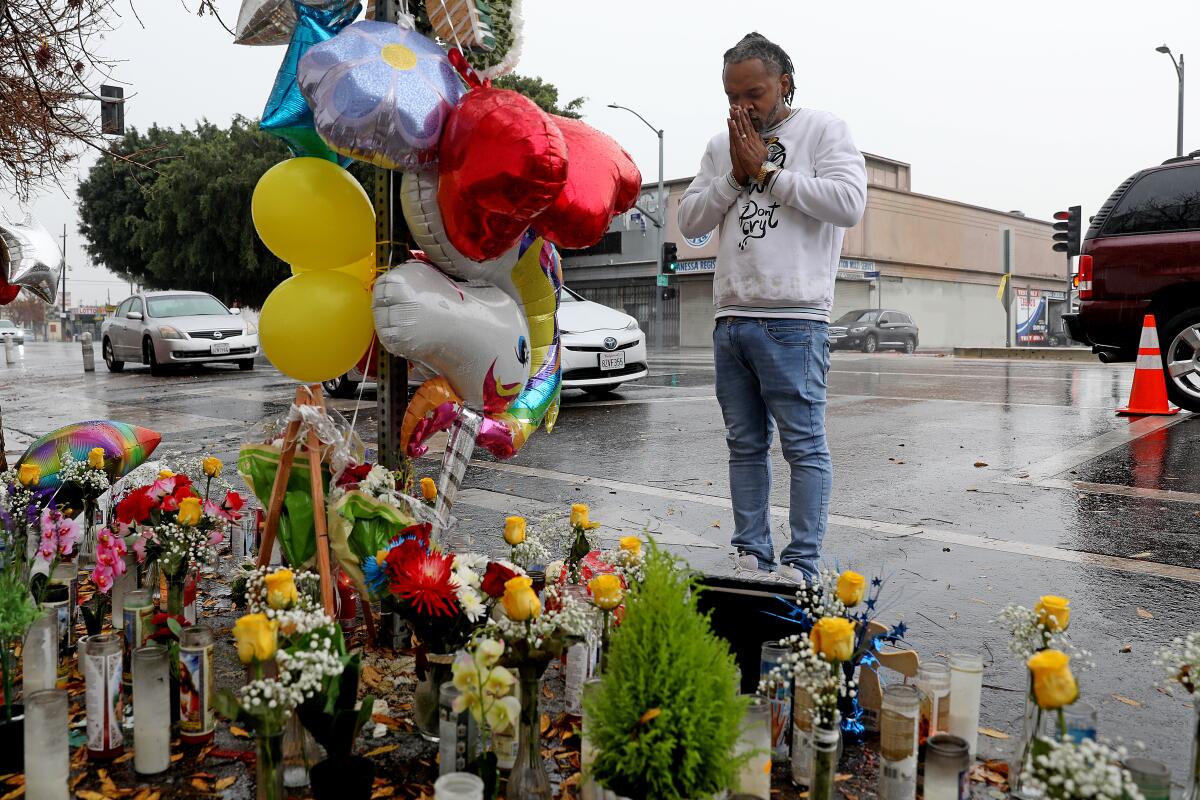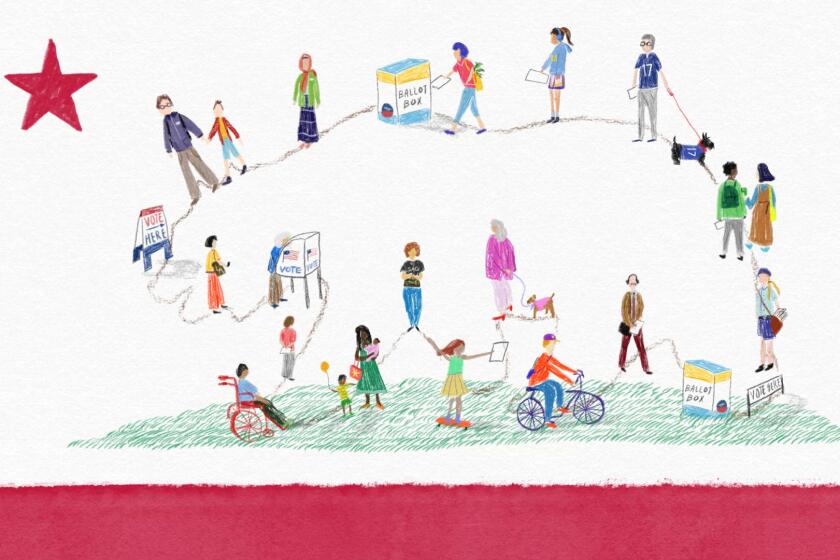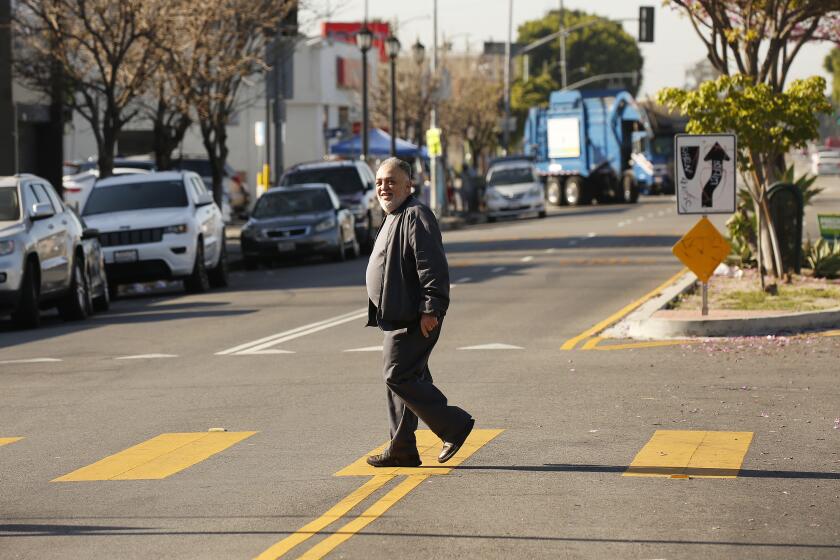Endorsement: Yes on Measure HLA. Los Angeles needs safer, more bikeable, walkable streets

Los Angeles had more traffic deaths than homicides last year. At least 330 people were killed in vehicle collisions, the highest number in 20 years.
Even as L.A. streets have become deadlier, the city has slow walked or simply ignored its own plans to make travel safer for pedestrians, cyclists and motorists. That includes the city’s Mobility Plan 2035, an ambitious transportation vision adopted by the City Council and then-Mayor Eric Garcetti in 2015 that committed to redesigning streets over two decades to make it safer and easier for people to walk, bike and take transit.
While the presidential contest will garner the most attention in 2024, there are many important races and measures on state and local ballots.
The Mobility Plan proposed hundreds of miles of new bus-only lanes and protected bike lanes, as well as sidewalk and streetscape enhancements in neighborhoods with lots of pedestrians. But since its adoption, the city has completed upgrades to just 88 miles of city streets. That’s only about 5% of the miles envisioned for bike, bus and neighborhood safety projects. At that rate, it will take L.A. 160 years to fully implement the Mobility Plan.
The problem? For all L.A. leaders’ talk about fighting climate change and building a safer, greener city, their ambitious plans are too often scaled back or abandoned at the first sign of opposition. And there’s always some opposition to projects that carve out street space for bikes or buses or anything that might slow down motorists.
Frustrated by the lack of political will and bureaucracy, street safety advocates collected enough signatures to put Healthy Streets LA, or Measure HLA, on the March ballot. The initiative would force the city to carry out the improvements in the Mobility Plan. Any time city departments repave at least one-eighth of a mile of street, they would have to add the improvements outlined in the plan, whether bike lanes, bus lanes, pedestrian enhancements or fixes to ease vehicle traffic.
Some of L.A.’s most powerful interests are trying to sabotage a March 5 ballot measure aimed at making streets safer for pedestrians, bicyclists and even drivers.
This makes sense. When city crews have to repaint the lines when repaving a street, why not restripe the roads according to the Mobility Plan at the same time? Yet in a city as large as Los Angeles, making this a smooth process is not always easy. The multiple departments responsible for street paving, engineering and transportation safety struggle to coordinate and have missed opportunities to install Mobility Plan projects. The mandate of Measure HLA would, ideally, prompt City Hall to better organize street work programs and make Mobility Plan improvements a part of routine road maintenance.
The initiative also would require the city to create a website so the public can track and follow the progress of Mobility Plan projects. The measure would gives residents the right to sue the city if it fails to comply.
If California wants people to drive less to cut planet-warming emissions, the state should be spending far more money on pedestrian, bike and transit projects.
Opponents of Measure HLA, including the group Keep LA Moving, argue the initiative is anti-car because it will result in some projects that remove traffic lanes, which could slow commuters and emergency response. But they lack any hard data to back up their fears. The reality is that the vast majority of L.A. streets will be untouched by the Mobility Plan.
Measure HLA has broad support among neighborhood councils, environmental, labor and business groups. Their members understand that Los Angeles needs to evolve into a city that is safer for pedestrians, bicyclists, transit users and, yes, even motorists. The plan recognizes that Angelenos will still drive — it includes 80 miles of streets that are prioritized for vehicle travel and projects that help drivers maintain safe, consistent speeds and reliable travel times.
The rising number of traffic deaths is a preventable tragedy. Voters have the power to make Los Angeles’ streets safer. Vote yes on Measure HLA.
More to Read
A cure for the common opinion
Get thought-provoking perspectives with our weekly newsletter.
You may occasionally receive promotional content from the Los Angeles Times.













